In our series of articles on aquarium fertilization,"Fertilizing a planted aquarium - part 1, part 2 and 3", we have covered the basics of aquatic plant nutrition. There are many different water parameters such as pH value and total hardness which can be determined using apt water tests. If you want to focus on keeping aquarium plants, we recommend some further, more specific tests that cover the special requirements of plants. In the following we'll explain which water tests any aquascaper or planted aquarium keeper should purchase and which ones are more or less unnecessary.
In general, ambitious aquascapers shouldn’t shy away from spending the money that high-quality good single tests cost. These tests are usually based on liquid reagents. Hard-to-read liquid tests of a lesser quality and stripe tests are not as suitable to determine exact results.
Crucial water tests
In the following we will list high-priority tests that shouldn’t be missing in your repertoire if you want to delve deeper into water planted tank keeperics.
CO2 test
Carbon is one of the most crucial nutrients for plants which is often available in an aquarium only in insufficient amounts. To accelerate plant growth, additional carbon usually is supplied by a CO2 system. The amount of dissolved carbon in the water can be determined with a direct test. But since the CO2 saturation should at best be monitored permanently, the use of a permanent test, i.e. a drop checker with a coresponding,indicator fluid makes a lot of sense.
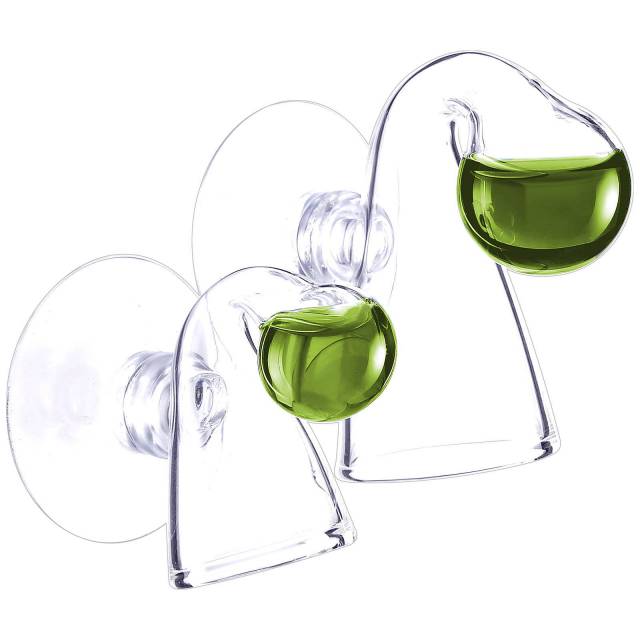
You should aim for a CO2 content of 20 to 30 mg/l, which is indicated by the color green in the test reagent. For info on the topic of permanent CO2 testing, please go to our article "Proper determination of the CO2 content".
Nitrate
Nitrogen (N) is one of the three main, or macro, nutrients (NPK) for plants. Nitrogen in the shape of nitrate (NO3) can be determined by a water test. The nitrate content of the aquarium water should be at 10 to 25 mg/l in a planted aquarium. A single-component fertilizer such as Aqua Rebell Makro Spezial N or Advanced GH Boost N can specifically raise the nitrate content. A lack of nitrogen causes deficiency symptoms in the aquatic plants like yellowing leaves, and often coincides with a sudden occurrence of green algae like filamentous algae
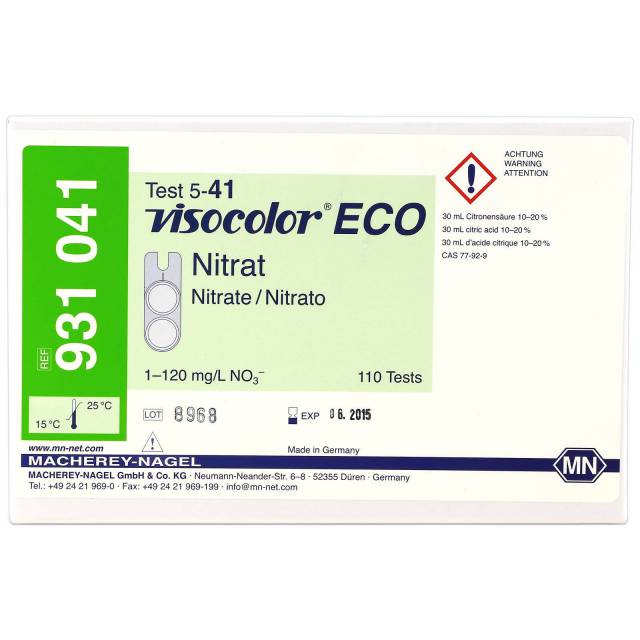
Unfortunately, many standard nitrate tests for aquaria are hard to read, which is why we recommend the nitrate water test by Macherey & Nagel, which is a bit more costly but also much more precise.
Phosphate
Phosphorus (P) belongs to the so-called macronutrients, just like nitrogen (N) and potassium (K). The corresponding water test gives you the content of phosphorus present as phosphate (PO4). As a rough guideline, a phosphate content of 0,1 to 1 mg/l is recommended. It is not always essential to keep up a measurable phosphate content. Depending on the situation, the phosphate concentration can sink relatively quickly. Since plants can store this nutrient pretty well, it is not always necessary to steadily re-fertilize. Many planted tank keepers rely on the principle of push fertilization: once a week, PO4 gets added until a certain target content (e. g. 0.5 mg/l) is reached, using a liquid phosphate fertilizer. In the course of the next week, the concentration is allowed to drop to zero. It usually takes a rather long time until deficiency symptoms become visible in the plants. Stagnation in growth with reduced shoot tips may occur, or a darkening plant color. The increased occurrence of green spot algae is also often brought into connection with a lack of phosphorus.
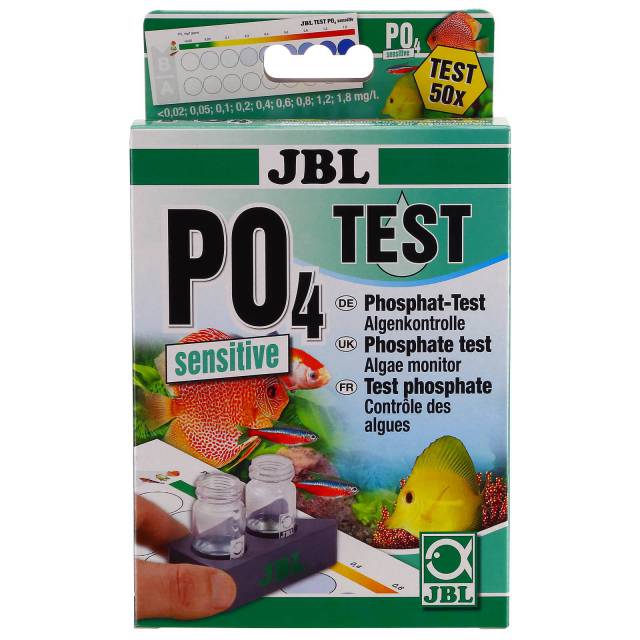
Iron
Iron (Fe) is important for the formation of leaf green (chlorophyll). If there is a lack of iron, the plants will show significant so-called iron chlorosis with a bright, pale leaf color and leaf veins staying visibly green, which is best seen in new growths. Iron is ideally added to a planted aquarium with an complete iron fertilizer. Together with other important trace elements such as manganese, boron and zinc, but also with nutrients such as potassium, the need for micronutrients and, at least in some parts, for macronutrients is covered. The Fe content can be determined using an Fe water test. The target value is a content of 0.05 to 0.1 mg/l of Fe. Similar to the macronutrient phosphorus, iron doesn’t have to be constantly traceable in the water. This is partly due to the nutrient stabilization of the respective liquid fertilizer. It determines how quickly the iron contained in the fertilizer is made available to the plants. If the Aqua Rebell Mikro Basic Eisenvolldünger is used, the nutrients are stabilized much stronger and remain available to the plants over a prolonged period of time. This fertilizer is suitable for weekly as well as daily use. When you use Mikro Spezial Flowgrow instead, whose nutrients are stabilized more gently, they become immediately available to the plants, but are also used up more quickly respectively, they are broken down by microorganisms much faster. Here, a daily dose is recommended. Especially with this kind of liquid fertilizer, the added iron might not be traceable after only a few hours.
If there is too little or too much iron in the aquarium water can be seen with the naked eye, though. A lack of iron leads to the symptoms mentioned above. An overdose often intensifies the growth of red algae, (black beard algae or staghorn algae). An Fe water test should therefore definitely be part of the basic equipment for any less-experienced planted tank keeper or as a security reference for advanced aquascapers.
Optional water tests
For the ambitious planted tank keeper, the ratio of other macronutrients such as potassium, calcium and magnesium might be interesting as well, in order to optimize the nutrition of aquatic plants. We go into further detail in our article "The correlation between calcium and magnesium". If you want to delve deeper into the subject, the purchase of individual water tests for the respective parameters makes a lot of sense.
Potassium
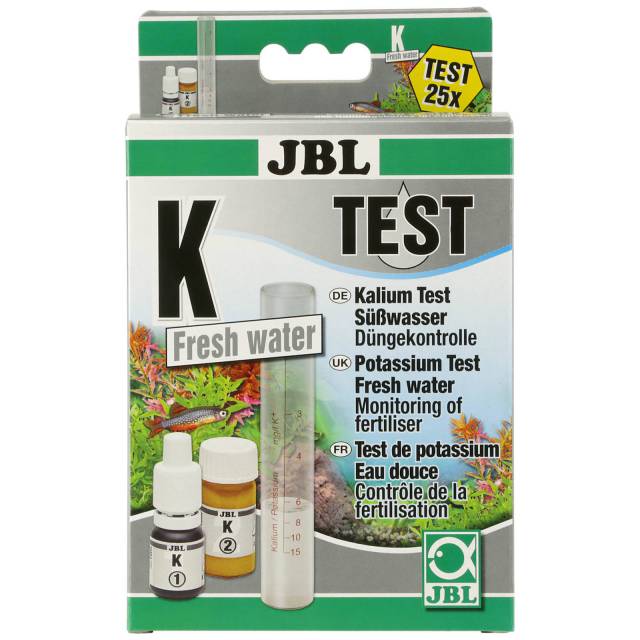
Useful potassium tests for fresh water have only become available recently. The recommended potassium content in a planted aquarium is between 5 and 10 mg/l. The plants do not really consume large amounts of this element, but when it is deficient, plants show signs of necrosis (holes in the leaves). Many fertilizers such as complete iron fertilizers, ready-mixed NPK products as well as some nitrate fertilizers supply the plants with potassium on the side. For a targeted increase of the potassium content, we recommend single-component potassium fertilizers such as Aqua Rebell Makro Basic Kalium.
Magnesium
Magnesium tests suitable for freshwater aquariums have also only been available for a short time now. Magnesium (Mg) is often underestimated, but it is an important nutrient for aquatic plants and a momentous component in photosynthesis. In tap water, unlike calcium, magnesium is only present in small amounts. A planted aquarium should contain more than 10 mg/l of magnesium, respectively, it should have a certain ratio in relation to calcium. The nutrient can easily be added using Epsom salt.
Total hardness
The total hardness (GH) indicates the total sum of alkaline earth metal cations present in the aquarium water. Above all, it consists of the elements calcium and magnesium. If you want to have a closer look at the calcium-magnesium correlation, you need to be able to determine the calcium content, too. Convenient water tests are available. But even without a test, the calcium content can be deduced, if you know the magnesium content and the total hardness. Therefore, we advise you to purchase a GH water test. Monitor your total hardness regularly, especially if you keep soft-water animals like Bee Shrimp, or if you use water-hardening stones as decoration.
Carbonate hardness
The carbonate hardness (KH) should not be too high if you want to keep aquatic plants successfully. Especially if you use water-hardening stones such as Seiryu / Ryuoh in your aquarium or aquascape, the KH will increase significantly within the week. Thus, the carbonate hardness should be checked at regular intervals, using a KH water test. Larger water changes with soft water will help lowering carbonate hardness.
Less important water tests for planted tanks
The following tests are not quite as important for the successful operation of a plant-accented aquarium. However, in some cases or for a regular aquarium with a focus on fish, they are quite useful.
Nitrite and ammonium
While a newly set-up aquarium cycles, certain strains of bacteria need to develop, which help push forward the pollutant decomposition in the ecosystem. This includes nitrogen compounds such as nitrite (NO2) and ammonium (NH4), which can be poisonous for the aquarium’s inhabitants at certain levels. They may accumulate in large concentrations during the cycling phase. These pollutants can be measured with the appropriate water tests (e. g. with the JBL NO2 Test and JBL NH4 Test). If overly high concentrations occur during the cycling phase, you should put stocking the tank with animals on hold. In a stable aquarium that has been running for a while, these substances are usually no longer detectable or only in very small concentrations.
The pH
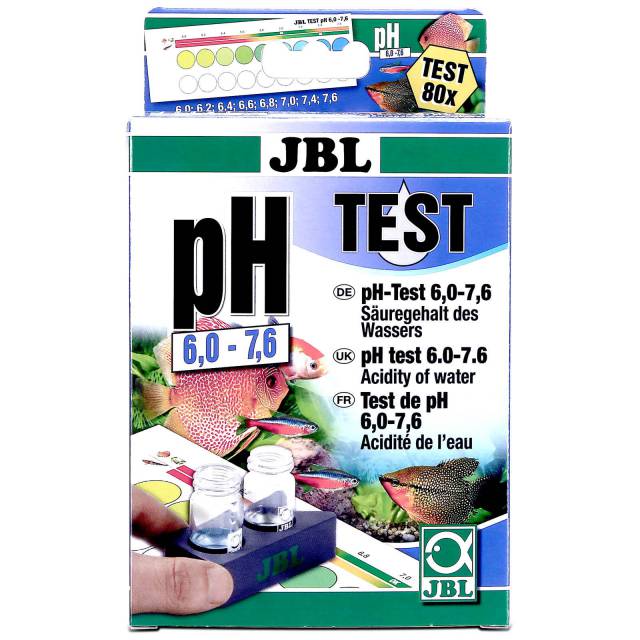
The pH in a planted aquarium is usually kept at a slightly acidic value below 7 by the use of soil substrate and the supply of CO2 This rough estimate suffices for a successful planted aquarium. Most tropical ornamental fish also prefer slightly acidic water. The pH value doesn’t necessarily have to be monitored constantly if the set-up is right. Should you as an aquarium keeper be ambitious to keep and breed special fish or shrimp, you might be compelled to adhere to a more precisely defined pH value. Of course, a suitable water test should be at hand then.
Is your pH too high? We have listed some of the possibilities for reducing the pH value in this article.
Other
Other water tests for parameters such as copper, chloride and silicate can be purchased if problems with those elements have occurred, are suspected, and of course also to rule out problems beforehand, which should be preferred. Problems may occur when you use tap water. A water conditioner or the use of demineralized water (by e. g. reverse osmosis) can be a remedy.